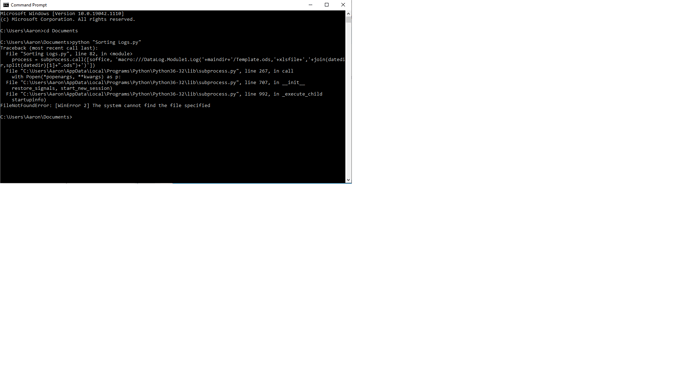I have a python script that I run every day. At the very end, it runs a macro whose job it is to pull data into a template file and save it with a specific name passed to the macro by the python script. Yesterday at the end of the day, I upgraded LO from 5 to 7. This morning, the script no longer works. (The macro isn’t doing what I need it to.) I call the script from the command prompt. Here are my python script and macro, as well as the error messages I’m getting. The line numbers in the errors don’t mean anything to me. (To upload the python script, I had to copy and paste its contents into a .odt file, so I went ahead and stashed the macro in that file. (On my system, the macro is not in any file, but at the top level.))
Sorting Logs.odt (19.1 KB)



